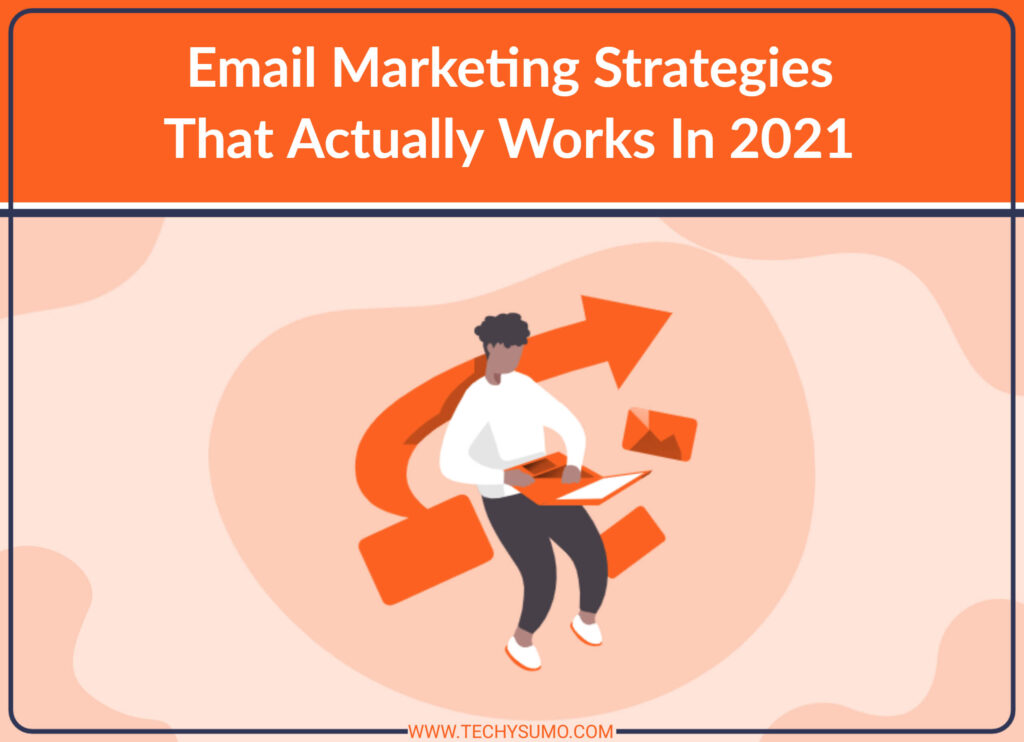Want it for not, your SaaS website needs backlinks. Here you know about link building strategy for saas businesses.
They are hyperlinks from other websites to yours. Backlinks are a way to show search engines that the content, therefore, the website, is reliable and authoritative because others are linking to it.
So, backlinks bring organic leads to your website and help to rank higher on Google. Despite being so important, often they’re not a part of many SaaS marketing strategies.
In fact, studies showed that 90.63 percent of all content out there gets no traffic from Google because there are no backlinks to it.
No traffic means no clients.
So, for your website to attract traffic and promote your software to more people, you need to learn to get quality backlinks.
Here are six effective SaaS link-building techniques you can start doing today.
Table of Contents
link-building techniques For Saas Businesses
1. Create Link-Worthy Blog Content
You can’t get backlinks from others without content on your website’s blog.
That doesn’t mean creating any content for the sake of it. For content to be good enough to attract backlinks, it needs to be super relevant and useful for your intended audience.
That makes it “link-worthy,” or so engaging and useful that others will want to link to it.
One way to ensure relevance is to check your website’s data in Google Search Console to see what keywords people are using to find your website.
Go to Search Results in the Console’s main menu and scroll down to the Queries section.
Here’s what the Console had for the website of Tidio, a SaaS company offering chatbot software for small businesses.
They show that Tidio’s potential clients are looking for an app to create a custom chatbot. Also, they need a website chatbot that can display a welcome message for customers.
Analyze these search queries to see what drives traffic to your website. Each query might be a good idea for a useful and “link-worthy” content piece.
For example, the “how to make a chatbot” query shows that Tidio’s customers are looking for guides to create a chatbot. That’s an idea for a great content piece!
When you have a list of keyword-based ideas, think about what types of content you can turn them into.
For SaaS businesses, the most engaging ones are:
- industry reports (“a state of the industry,” a list of best practices, etc.)
- detailed how-to articles (tutorials providing practical advice to solving problems that a typical customer might have)
- educational webinars (videos sharing professional advice, can be easily created with these best webinar software)
- helpful business guides (detailed instructions on how to use your software to solve business problems
- insights-rich case studies (reports containing stories showing how your product helped companies in the industry)
- interviews with business leaders and experts (interviews sharing actionable advice for your potential clients).
Create different content types and remember to keep them educational, not promotional, to encourage more people to link to them.
2. Do Guest Posting

Guest posting is the practice of writing a blog article and publishing it on another company’s blog.
It’s a really powerful link building technique to get backlinks because you can:
- get published on high-authority websites in your niche (those are high-quality backlinks!)
- share information about your business, product, and expertise and build a positive reputation
- get backlinks from people who read your guest article (that’s even more backlinks!)
Also, guest posting helps with hitting different website marketing goals.
You can write a post to:
- raise awareness about your business
- show how your product tackled a real business issue
- share the professional experience you have.
So, who should be responsible for writing these posts?
Often, guest posts are written by the most experienced persons in SaaS companies (department heads, team leaders, or even CEOs). They can provide advice and insights beyond common knowledge.
Here’s a headline of a guest post about conversational marketing by Pawel Lawrowski, the head of growth at Tidio.
As someone with 10+ years of experience in digital marketing, he is an expert when it comes to selling products online using different marketing strategies.
If you can’t always use the folks at your office, try to find a guest blogging service.
To start this link-building strategy, choose an authoritative website that accepts guest publications (it needs to be relevant to your industry, too). “An authoritative” website here means one that has a domain authority, or DA, of at least 50 (the higher, the better, really).
Read their guest blogging guidelines and follow them by heart to get your content published.
A good way to manage your guest blogging effort is to create a list of websites you’ve chosen to submit guest posts to. As you browse each, try to find a person who might be of help with getting published.
In many cases, it’s a content marketing manager.
The very bottom of blog articles is typically a place where you can find contact data of these people.
For example, let’s suppose you’d like to write a guest post and put a new spin on this existing Shopify experts article for ReferralCandy (which has a nice DA of 81, according to Ahrefs).
You can visit their blog and find that it was written by Si Quan Ong, the content marketing manager. Exactly who you are looking for!
The contact data is just below their author bio.
You can also check out this outreach guide to learn even more effective ways to look for your guest posting contacts.
Finally, keep everything you find in one place. A Google spreadsheet like the one below is a great idea.
In addition to the content manager’s emails/social media profile links and the site’s URL, you can include the domain authority (remember to keep it above 50), the progress, and the date of pitching/publishing the posts.
Having this list will help you stay organized and keep track of your performance.
When you’ll have at least ten sites in your spreadsheet, try reaching out to the editors. Write them a message saying that you’d like to get published on their website and give at least a few topic ideas.
If they respond, follow their recommendations on writing and submitting the post. Include a link to your website in a non-promotional way to ensure that the editor keeps it there.
3. Answer Questions from HARO
Many bloggers out there are struggling with various business-related issues you might have experience with solving. That’s why sites like HARO – Help a Reporter Out – exist.
HARO sends multiple daily emails with queries from bloggers, marketers, and other content creators looking for expert advice.
Here’s what an email with questions related to Business and Finance topics looks like.
As you can see, an email from HARO is literally a list of questions divided into topics (which are defined by you).
If the response you wrote is accepted by the inquirer, it will be posted on their website, along with your name and the link to your company.
That’s it. So the secret here is to be as helpful as possible when answering the inquiries.
Many questions come from high-authority websites. So, try responding to inquiries that are relevant to your industry or niche on a regular basis.
So, sign up for HARO as a source to write answers, and you’ll have many opportunities to get links from others.
4. Turn Unlinked Mentions into Links

Have you been doing content marketing on your blog for a while?
If the answer to this question is “yes,” chances are that someone has already mentioned your company or software in their content.
For example, your software might have been featured in “Top apps” posts or how-to guides.
But, in many cases, others might not have given you a link but mentioned you in the form of plain text.
This is called an unlinked mention and is one of the SEO techniques that can boost a website’s ranking. You need to take advantage of that mention.
Find unlinked mentions that could be turned into backlinks with a web monitoring tool.
It’s simple and you can do it for free with Google Alerts.
The tool can send you notifications to your email address based on the keywords you need. What you need to do is set preferences and provide your email address to send the notifications.
The whole deal takes about a minute to complete.
If you’re wondering how often you should receive the notifications, try setting this option to weekly and see how it
Check every mention that the tool sends you and see if there’s an opportunity to link back to your website.
If the link comes from a website that’s worth getting a link from, you need to find the contact details of the person who wrote or published it.
Most websites provide emails, LinkedIn profiles, or other contact information of the editors, blog managers, or whoever is responsible for publishing content.
Reach out to them and ask nicely for the link. Be grateful and thank them for their time in advance to avoid coming off as too pushy.
Here’s what you can write in your email.
Feel free to use this template to message the editor. To make your message look more professional, consider using email signatures.
If you can’t locate an editor’s contact information on the website, try an email lookup tool to find their email address.
So, using Google Alerts and reaching out to get links will ensure that you don’t miss any unlinked mentions.
5. Use Broken Link-Building

You must have come across this quite a few times for sure.
You’re browsing through an article, and click a link inside, but instead of redirecting you to the source, the website shows a 404.
Google doesn’t appreciate that because the link stops its crawlers in their tracks. So, the people who link to that lost resource would want to have links that work.
It’s an opportunity for you to get some links from them.
Here’s how.
If you have a resource that’s similar to the one that’s inaccessible because of the broken link, you can reach out to those people and tell them to link to yours instead. Basically, you’re doing them a small favor because they get a working link!
Use Ahref’s free broken link checker to find high-volume pages with broken links.
Read through and check if the broken links can be replaced with your resources (articles, online tools, etc.)
If you find some, reach out to those linking to non-existing pages and offer to link to yours. Just write them an email saying that you have a nice source for replacement.
This way, you might get more links plus build relationships with others who could give you mentions in the future.
6. Use the Skyscraper Technique
The Skyscraper technique is really simple but can get you a lot of quality backlinks.
Here’s how it works:
- Find a really popular article that many people link to
- Read it and find some gaps and shortcomings that you can address
- Write a better version of that article
- Reach out to people who might be interested in linking to it.
You see what’s the catch here? You take something great and add more value to it so the people would be likely to give links.
If you’re not sure about how to find a popular piece of content, feel free to browse the blogs of your competitors.
Run some of their articles through an SEO tool like Ahrefs to see how many backlinks they have.
Take a look at the chatbot statistics article from the Tidio blog which acquired 70 backlinks from 37 domains.
Here is another piece about web hosting that is super useful and managed to collect links from 19 domains. It has some organic traffic coming in and a high traffic value.
It’s a good article to practice the skyscraper technique on – all you have to do is publish a better, more informative piece that could outrank this one and bring traffic to your site instead.
This might take some time at first. But the skyscraper technique gives you a good chance of acquiring high-quality backlinks and improving your SERP position.
It’s All About Content

You need to get backlinks because they show Google that your website is a reliable and popular source of information.
SaaS link building isn’t different from other businesses and can be done fairly easily. But remember that to get others to link to your website, quality content is a must.
That’s why you need to ensure that all content you publish – guest posts, blog articles, reports, etc, – is useful and engaging enough so others will want to link it.
Hope your content will be just like that.



